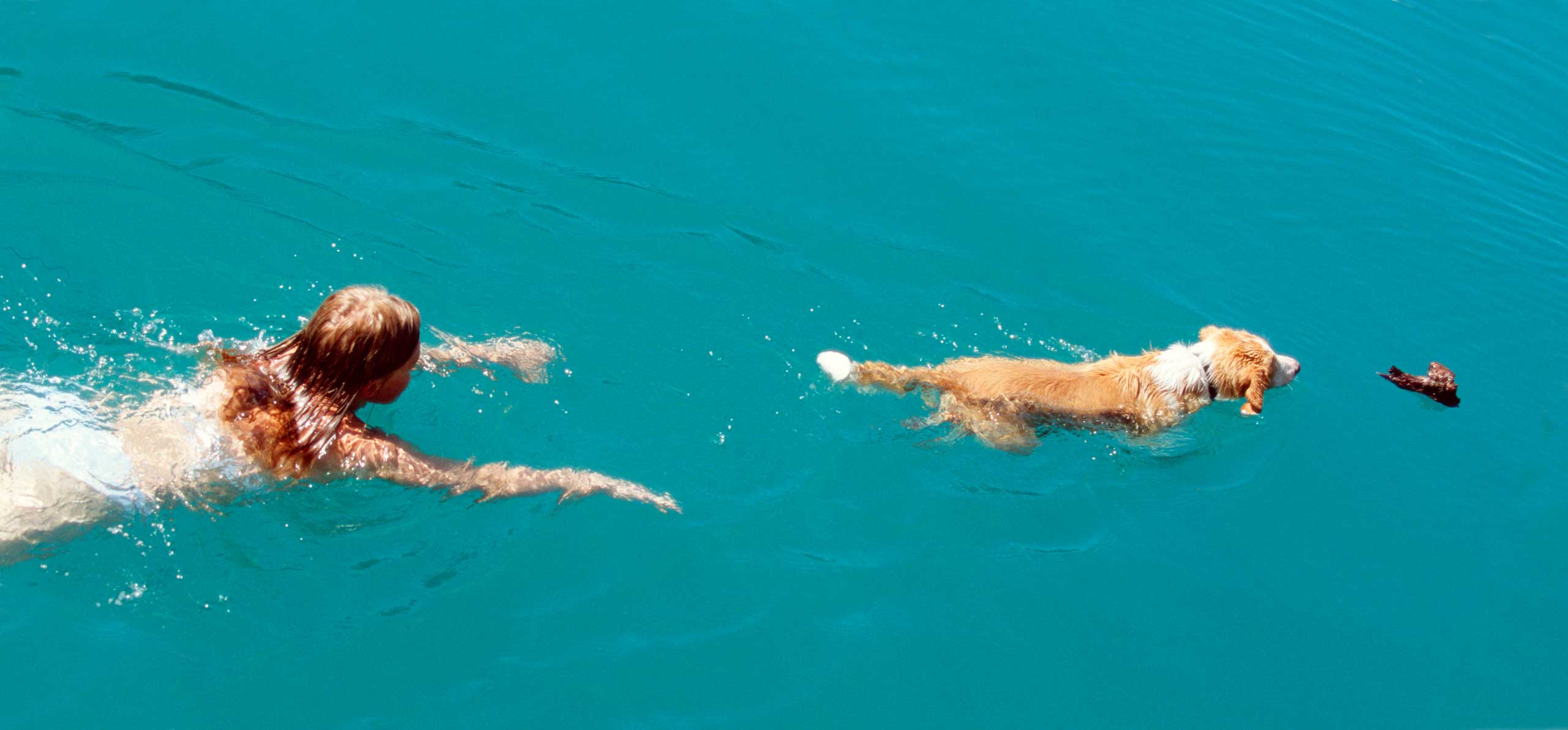Sinkers and Swimmers
Some dogs are bred to dive right in. If the name of your breed contains the word “water,” like the Portuguese Water Dog or the Irish Water Spaniel, it’s a pretty good bet that your furry friend will happily paddle without instruction. Other breeds that usually make good swimmers include retrievers, Newfoundlands, and standard poodles, whose distinctive clips were originally intended to keep the dog’s major joints warm in cold water.
Short, heavy-bodied dogs like Scottish and Boston Terriers, Corgis, Bulldogs, Dachshunds, Basset Hounds, and Pugs generally sink instead of swim. No amount of instruction will turn a dog who is physically incapable of staying afloat into an Olympic swimmer.
But as any pet parent knows, dogs are individuals with distinct personalities and preferences. Some Golden Retrievers may be afraid of the water while a toy sized dog may swim like a fish. And not all dogs are instinctive swimmers. Before yours takes the plunge, give him a lesson or two and observe some simple safety precautions.
Before Taking the Plunge
The first rule is to never let your dog swim unattended. Even a good swimmer can get trapped by not knowing how to get out of the pool or by swimming too far out into the ocean. And never throw your dog in the water with a “sink or swim” expectation. You could turn your dog off of swimming for life.
Getting His Feet Wet
To get started, take your dog to the edge of the lake or the shallow end of the pool so he can experience getting his paws wet. Encourage him with praise and treats. Turn around and bring him out almost as soon as you get him in, to show him the way. Do this a number of times so he knows how to get out.
Lead Him In With Temptation
Understanding what motivates your dog can help a lot. If he likes a certain toy, bring it in and toss it short distances to get him comfortable in the water. If he responds to treats, give him a bit of something special when he gets into the water, then give him more when he swims a short distance.
Dogs who are reluctant can be gently guided by a leash. While tempting him with a treat, draw your dog toward you in a straight line. Going sideways can cause him to lose his balance. Support him from underneath and slowly glide him through shallow water until he’s able to stay afloat by using his legs.
Not Getting Into the Swim
Remember, swimming should be pleasurable for your dog. If he wants to swim but doesn’t show a talent for it, put him in a canine life vest. But if your dog simply doesn’t take to swimming, find ways to keep him cool on dry land.
| Natural swimmers Dogs bred for water based jobs include: |
|---|
|
| Non-swimmers Dogs with heavy bodies or short legs include: |
|






